The One Ring has been destroyed, the dark lord Sauron has been cast down in ruin, and the Fourth Age is upon Middle Earth. Now, with the balrog called Durin’s Bane lying dead somewhere among the Misty Mountains, Lord Gimli has decided that the time is right to reclaim Khazad-dûm.
At long last, it is time for the dwarves to Return to Moria... and time to see if The Lord of The Rings as a setting is good ground for a survival game.
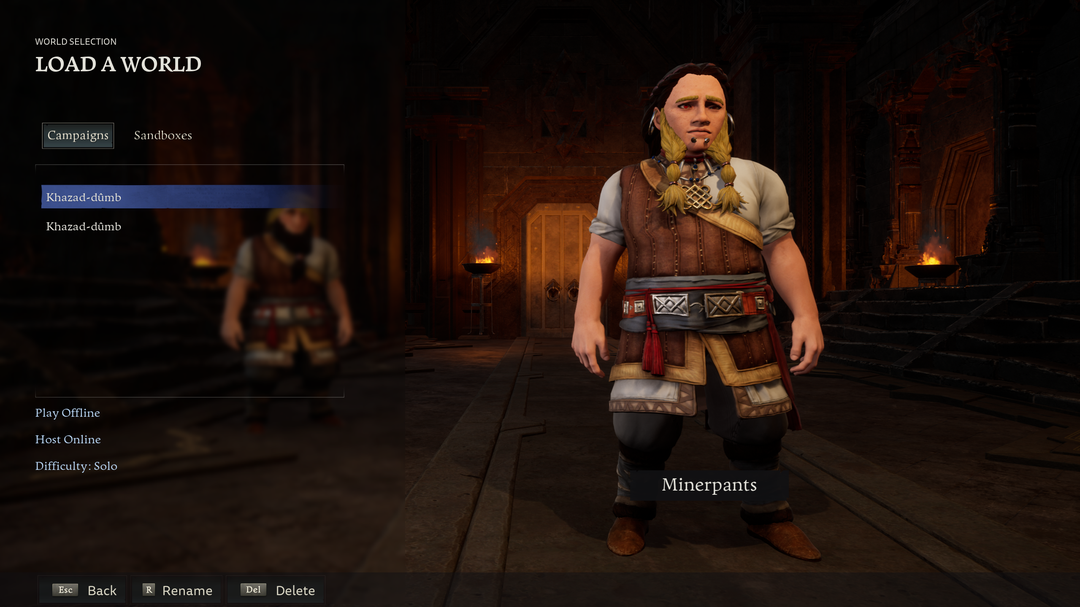
Yes, I named my first dwarf Minerpants. And yes, I have two campaign worlds, both called Khazad-dûmb. Are you really surprised at this point?
Nidavellir—AKA “Dwarfheim”
The Lord of the Rings: Return to Moria is a cooperative exploration/survival/crafting game where you play as a member of Gimli’s company on a mission to explore and retake Moria. When an accident leaves you (and up to seven others) trapped inside the mountain with no way back, you have no choice but to start exploring on your own. It's a good premise, one that lets you explore a world that has been well established for decades while still being able to take some creative license, since the books didn't explore the mines very thoroughly.
This first event kicks off an adventure where you more-or-less follow the Fellowship’s path from the Doors of Durin on the west side of the mountain to the Dimrill Gate on the east side. Along the way you’ll explore the ruins of old dwarven outposts and strongholds, build your own camps, fight orcs, and rediscover long-lost relics like the legendary Durin’s Axe.

And, of course, do a LOT of mining.
If you want a basic idea of what to expect from this game, look to Valheim. While I understand that every cooperative exploration/survival/crafting game has its roots in Valheim, this game is EXTREMELY Valheim. From the way you unlock recipes every time you touch a new resource to the fact that you’re being guided by a Plot Raven™, Return to Moria is one grabapple that didn’t fall far from the tree. This may sound like I'm saying Return to Moria is derivative, but what I meant to get at is that the game starts with a strong foundation which it tries to make into its own.
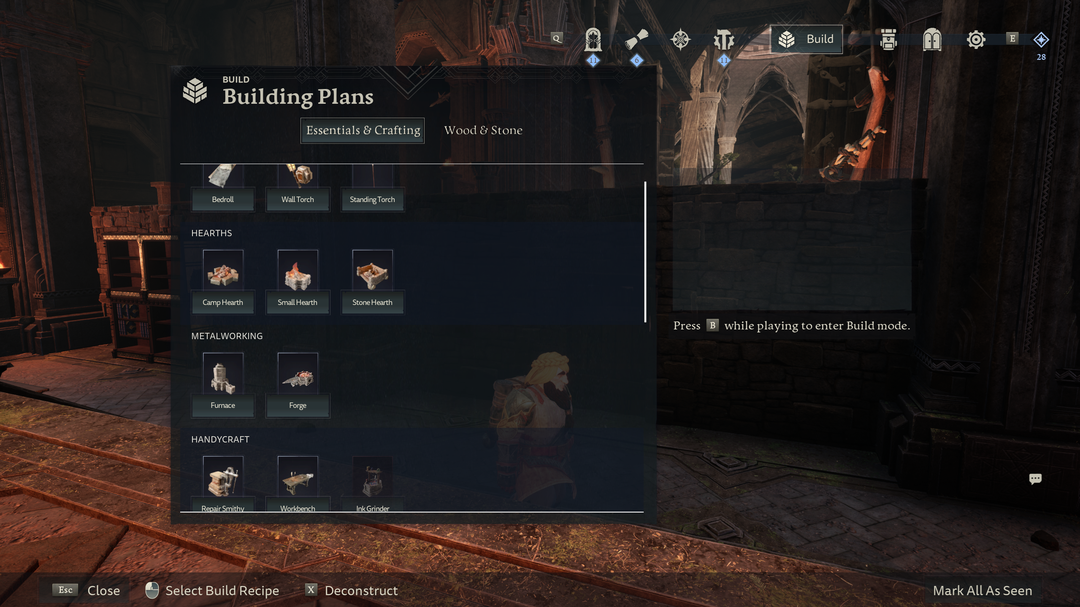
That’s not a complaint, mind you!
Where it does differ from Valheim, the changes are almost all positive ones. The movement and combat are much smoother, the graphics are sharper and cleaner, and the overall experience is much less frustrating… as long as you adjust the difficulty appropriately (more on that later).
The one place where Moria falls short of its predecessor is the lack of epic boss fights. There are a few bosses, sure, but they’re either “bigger orc” or puzzles disguised as battles. It's a shame, but large bosses aren't usually the point in a game like this. It's all about the exploration, the building, and the journey. Speaking of the journey...
Khazad-dûm Is Surprisingly Cozy
Return to Moria isn’t really a “cozy” game (there’s too much fighting and too little farming for that), but it’s definitely become my cozy game. There’s something uniquely satisfying about dropping into Khazad-dûm for a couple of hours to explore, mine, and work on my base. I’m not sure I could even say why this game hooked me in a way that everything from Stardew Valley to Valheim has failed to, but it definitely has. Maybe this just hits my perfect balance of comfort and excitement—or, maybe it’s because this is the game that my wife plays with me. The world may never know.
With that said, it’s the little touches that really make Moria feel alive and inviting. First and foremost, it turns out that dwarves (like everyone else in Middle Earth) really like to sing. You sing while you’re mining, you sing while you’re drinking, you sing to bolster your spirits… heck, once in a while you sing to unlock ancient doors or recall long-lost knowledge. It’s pleasant enough when you’re playing solo, but there’s something really special about a group of friends getting together for a good drinking song before you head out on another adventure. Build a base with tables and brewing barrels, and you have a little doses of magic before you head back out to explore and fight.
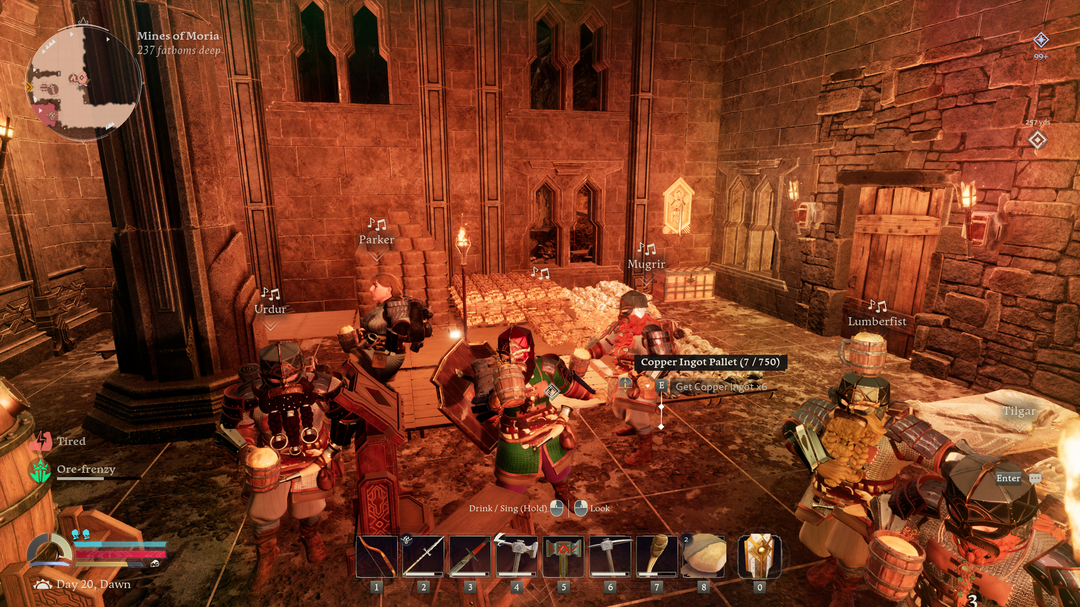
The world was created by the song of the Ainur, and music has powerful magic of its own in Tolkein’s stories. Therefore, Lord of the Rings is canonically a musical. In this essay, I will…
The devs have also done a great job of creating a world that feels like it was abandoned, but it’s just waiting for you to come along and rebuild it. Despite the fact that orcs and a Balrog have lived here from the Second Age until the Fourth Age—and I’ll be eternally grateful if some Tolkein scholar tells me how long that actually is—a surprising number of old buildings are still more-or-less intact. The entire game has an air of ancient, fallen splendor that practically begs you to reclaim and rebuild the dwarves’ ancient civilization.
There’s also a solid variety of decorations and furniture that you can use to really make your base feel like home. Sure, at first you’ll be building tiny camps that aren’t much more than a bedroll and a meal table, but by the middle of the game you can construct or repair entire buildings. And by the end…
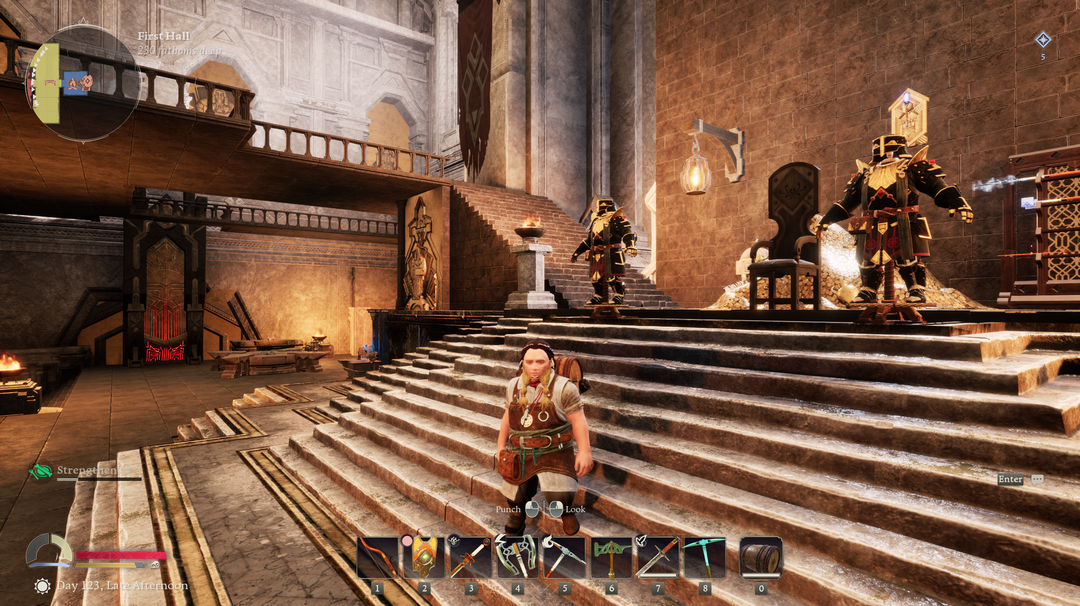
But Free Range Games, please, I am literally begging you, LET US SIT IN THE CHAIRS.
Due to the nature of the game, you'll probably not just be building one base, but multiple. As you dig your way deeper and deeper into the earth (the game always keeping track of how deep you are ala Subnautica), you'll want to keep building small bases to rest and recover in. Whether you create just one massive base you teleport back to or a string of smaller ones, it's up to you. Do you want to find ruined furnaces and outposts, rebuilding them as you go to try and bring some glory back to Moria? Maybe you want to create a brand new structure in the middle of nowhere overlooking an underground lake or crystal cavern; it's up to you and your friends.
A Flawed Gem
When Return to Moria first came out it was, to put it lightly, pretty rough. Eight months of updates have fixed the most glaring problems (and earned the game a “Very Positive” rating on Steam despite the early issues), but I’d be remiss if I didn’t mention a couple of things that still bug me about it.
My biggest problem, and something that almost everyone I’ve played with has also complained about, is that there’s no way to dismantle gear once you’ve made it. Not only does this mean any resources you spend on weapons and armor are gone forever, it also makes it so all of your gear just becomes useless clutter every time you unlock a new tier of equipment. At best, you can use your old stuff for decoration by building weapon racks and armor stands—but of course that means spending even more resources.
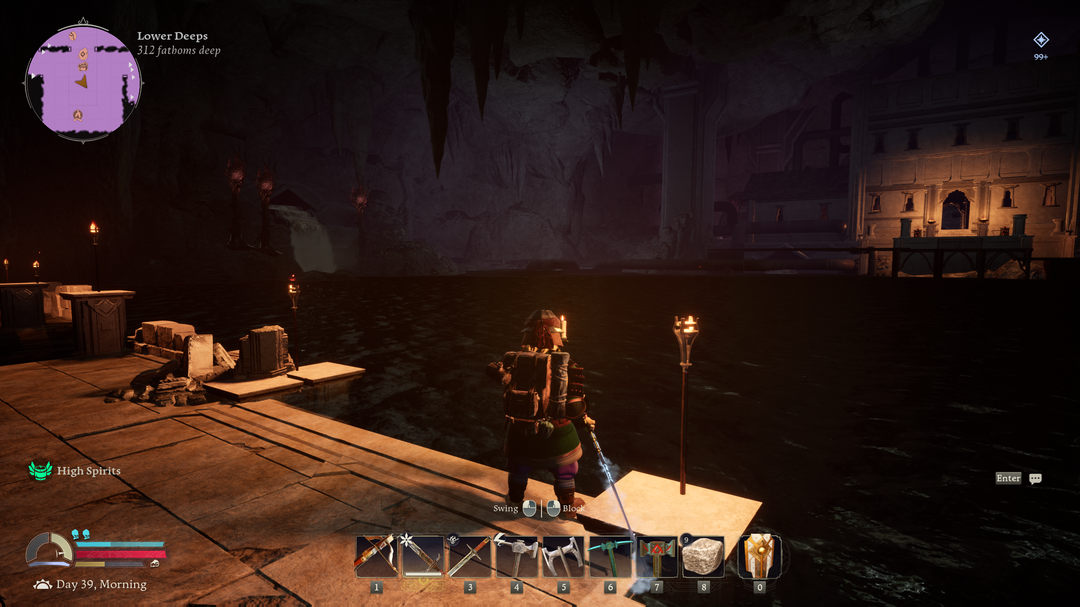
My suggestion: Take your outdated gear to the Drain Pumps and send it down to Dwarvey Jones’ locker.
The other major problem I’ve had is the classic “2D map for a 3D environment” issue. Moria’s map doesn’t even show any topography, which sometimes makes it really tough to figure out where you are and where you’re going. To the game’s credit, it does give you depth readings to help you find your way around, but that’s only useful if there’s already a mark on the map that you’re trying to get back to—not so much when you’re trying to find the path to the next area.
There’s also no getting around the fact that the building system is a bit janky, especially trying to fill in gaps and get your walls and floors level. It’s certainly nothing game-breaking, but it stands out when building is such a big part of the experience.
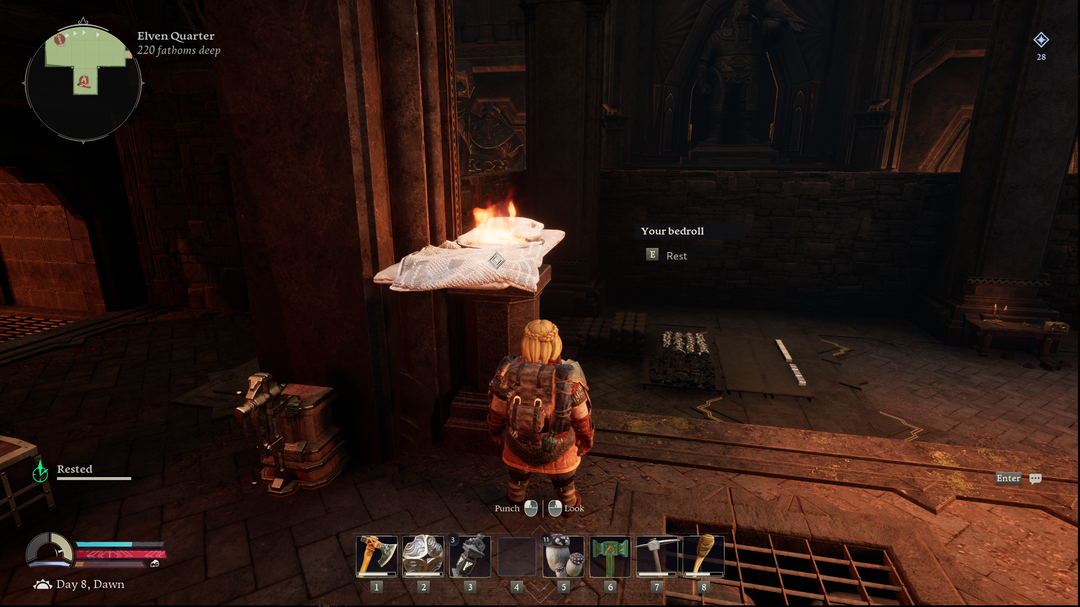
On the other hand, there’s plenty of the fun kind of jank as well, like this toasty-warm bedroll.
This last one is a nitpick, but it’s pretty big as far as nits go. Return to Moria’s “Normal” difficulty isn’t scaled for solo play, and it doesn’t warn you about that unless you actually go into the difficulty menu. So, if you’re playing on your own, make sure to change the difficulty to Solo unless you want to experience the Dark Souls of dwarfing.
A Treasure Worthy of a Dwarf
I love this game.
I got Return to Moria for free on Epic, but knowing what I know now, I would have gladly paid the $25 for it. In my opinion this game is more than worth it even at full price—but, if you’re not totally sold, I’d encourage you to at least put it on your wishlist and wait for a sale. If you have any interest in Lord of the Rings or in Valheim-likes (do we have a word for that yet? I feel like we should), you won’t regret buying this one. The developers are still updating and fine-tuning the gameplay, and the world just has a lot of good flavor which some survival games can come up short on. The one thing I would recommend is that while it can be fun to play solo, I highly recommend diving into this game as a group. It was obviously made to be a co-operative game, and again, I haven't experienced anything quite like having six friends all at once breaking out into a mining song as we get what we need to build new weapons.
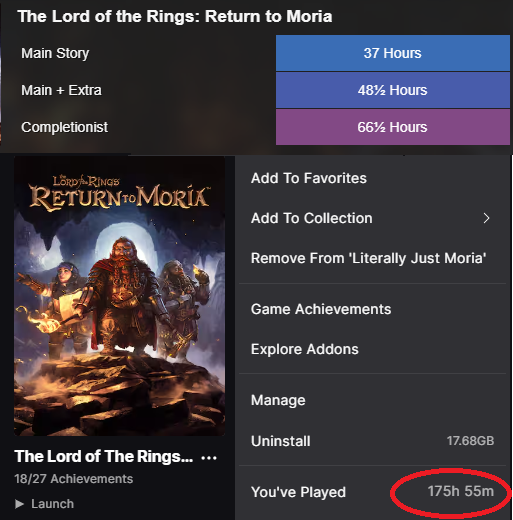
As you can see, I enjoy this game an extremely normal amount. (Stats from HowLongToBeat.com.)
So sharpen your axe, comb out your beard, raise your pick in one hand and your mug in the other, and get ready to Return to Moria!
PS: A Little Secret A Wizard Told Me
Note: This section will tell you how to get effectively infinite resources, removing pretty much all of the challenge from this game. I strongly recommend that you finish the story before reading any further.
Return to Moria’s devs have created a few special worlds called Warehouses that are loaded up with, no exaggeration, hundreds of thousands of every type of resource in the game. For example, imagine my surprise when I took a stack of granite that said 99+ and realized it was actually more than 10,000 pieces.
Players are free to go to the Warehouses, craft any gear they need, and take whatever they want back to their own worlds. So, if you’ve finished the story and you’re ready to just screw around building things, you can find the invite codes here.